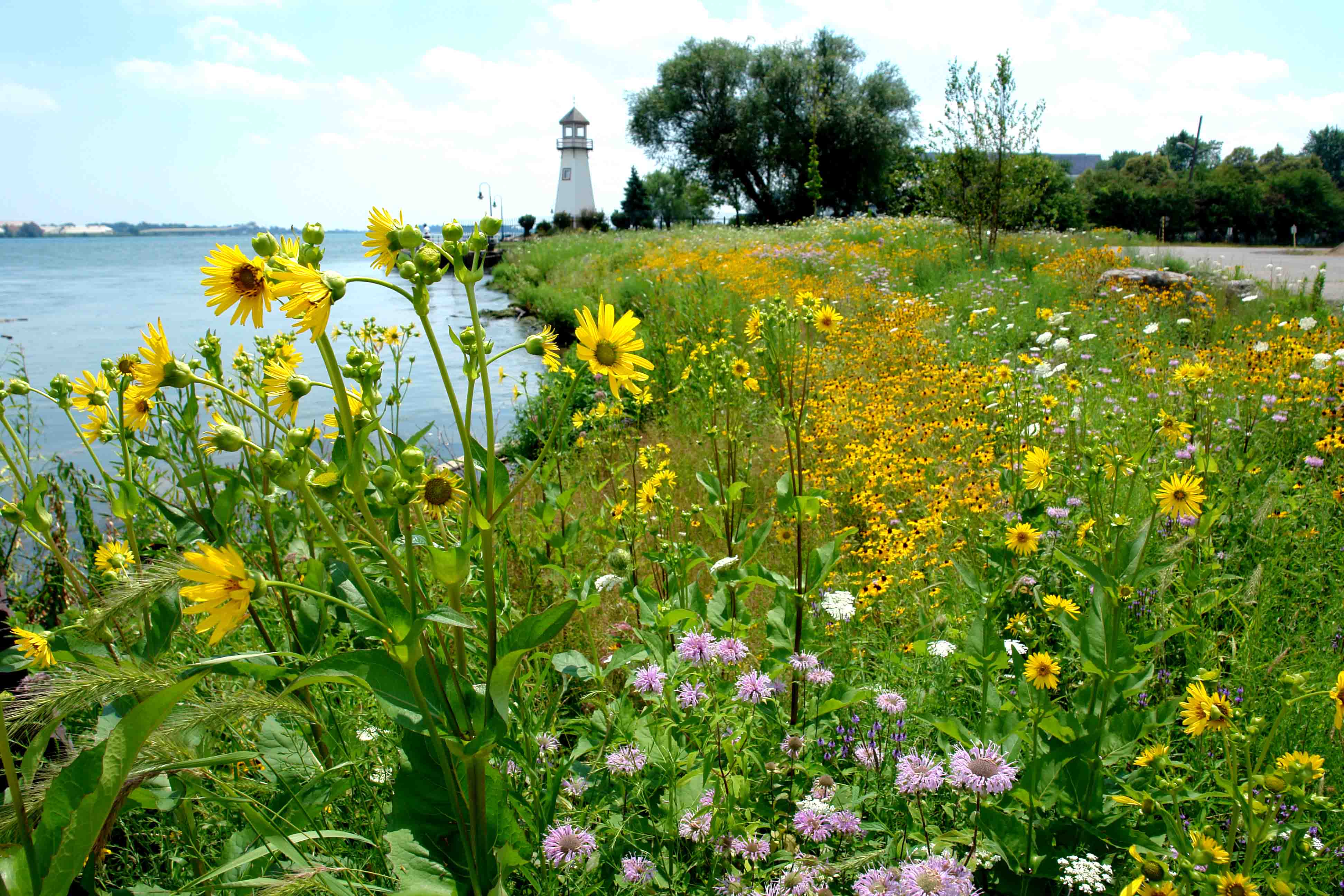A broken shoreline of concrete slabs, invasive plants and a gravel parking lot used to edge the Detroit River at Detroit Edison Energy Co.’s River Rouge Power Plant site.
In 2007, the company replaced that hard shoreline with a soft one.
“We’re trying to jumpstart the system and give nature a chance,” said restoration biologist Chris Lehr. “You’ve got to start somewhere.”
Lehr is president of Nativescape, a firm specializing in ecological restoration. He helped restore the site in River Rouge, Mich. using ecological principles to determine vegetation and other materials to soften the edge. Known as soft shoreline engineering, the technique stabilizes the shoreline and can create wildlife habitat, cleanse stormwater, improve public access and make the shoreline more attractive.
Concrete habitat

Evolution of a soft engineering site at Detroit Edison Energy Co.’s River Rouge Power Plant: Engineers removed concrete rebar and gravel. They re-engineered the shoreline with several habitat types and native plant species such as Canada Wild Rye, Wild Bergamot and Black-eyed Susan. Photo: Chris Lehr, Nativescape, LLC.
The recent effort is just one example of industrial organizations re-engineering the Detroit River’s hard concrete and steel shoreline once required by freighters making factory deliveries.
“Overall our power plants tend to sit on rather large tracts of land,” said John Austerberry, a DTE Energy Co. media relations specialist.
But not all of that land is used for the power plant’s operations. Much of it can be used for soft engineering projects, he said.
Company volunteers, nonprofit organizations and Michigan Sea Grant removed 850 cubic yards of concrete rebar, riprap and gravel along the 200-foot waterfront.
Concrete slabs the size of small cars were sunk just off shore to create nooks and crannies for steelhead, walleye, yellow perch, white bass and other native fish, said Jason Cousino, DTE’s Utility Workers Union of America safety specialist. He is also River Rouge’s wildlife habitat coordinator.
Soft engineering doesn’t mean it’s easy to do
“Even though we use the term soft engineering that doesn’t mean there’s not a significant amount of technical analysis,” said JJR civil engineer Patrick Doher.
JJR designed two soft shoreline sites in the Detroit River Waterfront’s East District.
The technique requires a toolbox of biological systems, engineering and landscape design skills. But its applicability also depends on what is at the site.
Lehr created a wildlife habitat plan after studying historical vegetation types in a guidebook provided by the Michigan Natural Features Inventory.
From there, the team worked up toward the plant from the shoreline–the slope from the plant’s main road channeled storm water directly into the Detroit River.
Wetland plants historically found in southeastern Michigan were planted on top of erosion control fabric at the water’s edge. They replaced invasive plants like Reed canary grass and Phragmites.
Ash and other aggregates from steel operations were removed. Volunteers created a floodplain and upland after the slope was graded. A bioswale was designed to intercept storm water from the road. Bioswales are a landscape design tool with a deep basin to catch stormwater and filter it through rock and soil. A rain garden was later created to protect the bioswale from this water.
Rain gardens perform the same function as bioswales but tend to be shallower in depth and allow stormwater to sink into the soil where it is filtered by soil and plants.
“Now [the stormwater] percolates into the soil there and it could still get to the river via groundwater but at least it’s been filtered and a lot of the contaminants would be filtered out into the soil,” Lehr said. “The native plants are cleaning the site.”
DTE Energy Co. paid $30,000 toward site construction. Another $19,000 in grants came from the U.S. Fish and Wildlife Foundation and the Metropolitan Affairs Coalition. The company has also applied the technique to its Monroe, Mich. power plant along the River Raisin, also in southeastern Michigan.
Studying the site
“Before you do any design you really need to know the site limitations and what’s causing the problem,” Lehr said.
The deeper the water, the more force to the shoreline.
“We’re hoping that we’ll come up with the right answer for a river such as the Detroit River that gets the heavy waves,” Cousino said.
Aquatic plants were planted on erosion control fabric made of coconut fibers. The combination should have stabilized the shoreline, but high winds generate large waves on the river, Cousino said. The technique failed. Cousino said they are still working toward a solution.
Deeper water also requires grading more land to create a stable slope, Doher said. That often determines if soft engineering will work. Adjacent land use can either encourage soft engineering or complicate it.
“When you’re looking at commercial or residential development, than obviously the land value dictates that you have less land in order for you to stabilize your shore,” he said.
Editors note: This is the second in an occasional series of stories looking at soft shoreline engineering.
